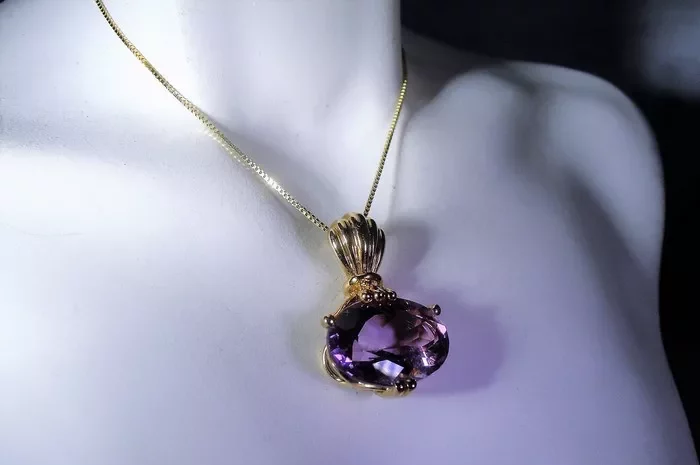Amethyst, a variety of quartz known for its stunning purple hues, has captivated jewelry enthusiasts and collectors for centuries. As a jewelry appraiser, understanding the market demand for the best quality amethyst involves examining various economic, cultural, and consumer trends. This guide aims to provide a comprehensive, easy-to-understand analysis of the current market demand for top-quality amethyst, complete with subtitles for clarity.
The Global Jewelry Market Context
Rising Market Values
The global jewelry market has been experiencing significant growth in recent years. According to industry reports, the market size for jewelry and gemstones has been expanding steadily, driven by increasing consumer disposable income, a rising middle class in emerging economies, and changing consumer preferences. This growth has positively impacted the demand for colored gemstones, including amethyst.
Colorful Gemstone Trends
Within the jewelry market, colored gemstones have become increasingly popular. Consumers are increasingly seeking unique and beautiful gemstones that reflect their personal style and preferences. Amethyst, with its range of purple hues from light lavender to deep royal purple, offers a striking and versatile option that appeals to a wide audience.
Amethyst’s Unique Appeal
Historical Significance
Amethyst has a rich history and cultural significance dating back thousands of years. In ancient times, it was believed to possess protective and healing properties, making it a favored gemstone among royalty and the aristocracy. This historical background has contributed to amethyst’s ongoing popularity and mystique.
Versatility and Aesthetics
Amethyst’s versatility is another factor driving its market demand. The gemstone can be cut and polished into a variety of shapes and sizes, making it suitable for a wide range of jewelry designs. From elegant rings and pendants to stylish earrings and bracelets, amethyst can be incorporated into any jewelry piece, catering to diverse tastes and occasions.
Market Demand Dynamics
Consumer Preferences
Consumer preferences play a crucial role in determining the demand for the best quality amethyst. Today’s consumers are more informed and discerning than ever, seeking high-quality gemstones that offer both beauty and value. High-quality amethyst, characterized by its vibrant color, clarity, and cut, meets these criteria and appeals to a growing number of jewelry enthusiasts.
Investment Potential
In addition to its aesthetic appeal, amethyst also has investment potential. As with other precious gemstones, the value of high-quality amethyst can appreciate over time, making it a valuable addition to an investment portfolio. This investment potential further drives demand, particularly among collectors and investors seeking to diversify their holdings.
Cultural and Geographic Influences
Cultural and geographic influences also play a significant role in shaping the demand for amethyst. In some cultures, purple is associated with royalty, power, and luxury, making amethyst a highly sought-after gemstone. Additionally, specific geographic regions may have a higher demand for amethyst due to local traditions, customs, and consumer preferences.
Supply and Demand Balance
Limited Natural Supply
The natural supply of high-quality amethyst is limited. Gemstones of exceptional color, clarity, and cut are rare and difficult to source. This limited supply, combined with increasing demand, creates a scenario of scarcity, which can drive up prices and further intensify market demand.
Mining and Production Challenges
Mining and producing high-quality amethyst involves significant challenges. The gemstone is typically found in geological formations that are difficult and costly to extract. Furthermore, the process of cutting and polishing amethyst to reveal its full beauty requires skilled craftsmanship and precision. These production challenges contribute to the limited availability of top-quality amethyst on the market.
Sustainable Mining Practices
In recent years, there has been a growing emphasis on sustainable mining practices within the gemstone industry. This trend has led to increased scrutiny of mining operations and stricter regulations regarding environmental impact and labor conditions. While these developments are positive for the industry’s long-term sustainability, they can also limit the supply of high-quality amethyst, further intensifying market demand.
Market Trends
Technological Advancements
Technological advancements are shaping the future of the gemstone market, including the demand for amethyst. Innovations in mining technology, gemstone cutting, and jewelry manufacturing are making it easier to source and produce high-quality gemstones. These advancements can increase the availability of amethyst on the market, potentially impacting prices and demand dynamics.
E-commerce and Globalization
The rise of e-commerce and globalization has made it easier for consumers to access a wider range of gemstones, including amethyst. Online platforms enable consumers to browse and purchase jewelry from around the world, expanding the market for high-quality amethyst and fostering greater competition among jewelers.
Consumer Behavior Changes
Changes in consumer behavior are also influencing the demand for amethyst. Today’s consumers are more socially and environmentally conscious, seeking gemstones that align with their values and ethical standards. Jewelers and gemstone producers that prioritize sustainability and ethical sourcing are likely to see increased demand for their products, including high-quality amethyst.
Rising Prices and Premium Quality
As the demand for high-quality amethyst continues to grow, prices are expected to rise. Consumers willing to pay a premium for exceptional gemstones will have access to a limited supply of top-quality amethyst, driving up prices and intensifying competition within the market.
Conclusion
The market demand for the best quality amethyst is driven by a combination of factors, including the global jewelry market context, amethyst’s unique appeal, consumer preferences, investment potential, cultural and geographic influences, supply and demand dynamics, technological advancements, e-commerce and globalization, and changes in consumer behavior. Understanding these factors is crucial for jewelers, gemstone producers, and investors seeking to capitalize on the growing demand for high-quality amethyst. As the market continues to evolve, staying informed and adaptable will be key to success in this exciting and dynamic industry.
Related topic:
- How Does an Amethyst Crown Chakra Placement Enhance Intuition?
- How to Harness Amethyst for Menstrual Cramps
- Can an Amethyst Pocket Stone Help You Sleep Better at…


